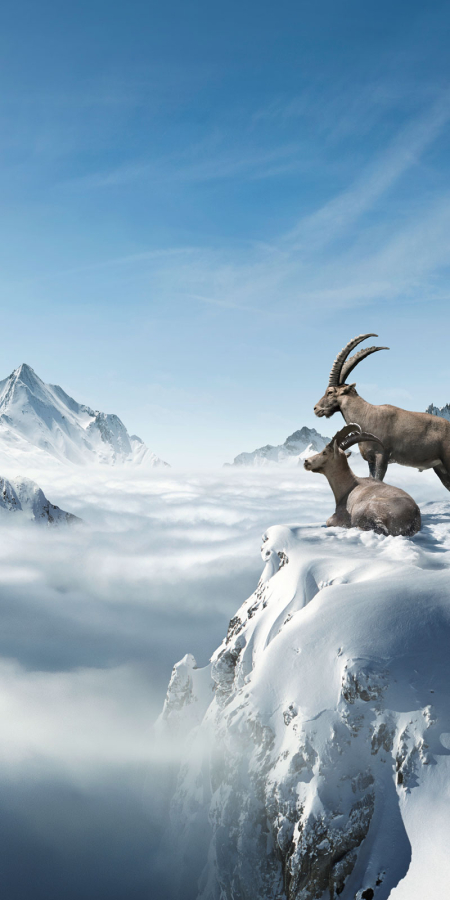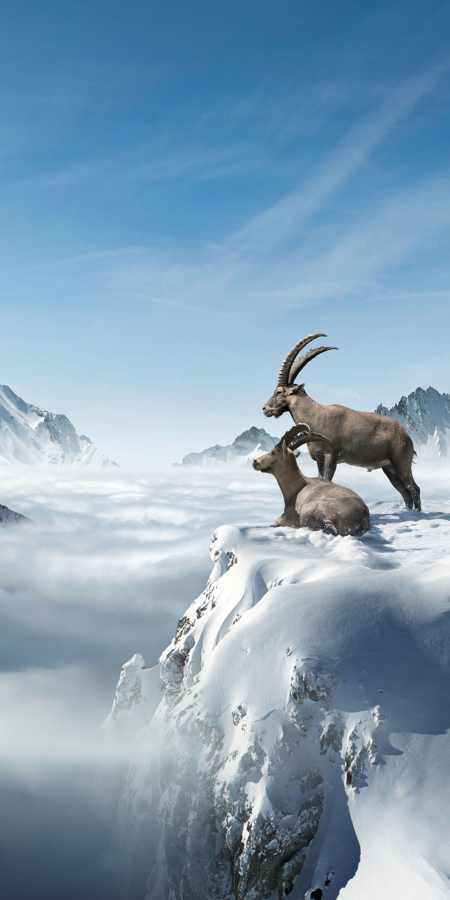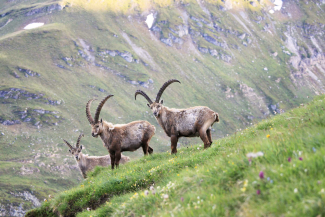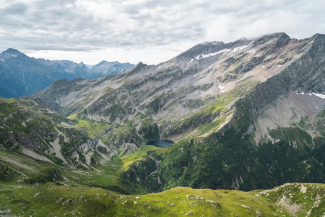Useful Information about Graubünden.
Frequently Asked Questions


Where does the name Graubünden come from?
The name Graubünden is derived from the Grey League (Grauer Bund). The Grey League was the most important league in the Free State of the Three Leagues, which comprised almost the whole region of what is now the Canton of Graubünden. In 1799, Napoleon incorporated the Leagues into Switzerland as the Canton of Rhaetia. It was renamed the Canton of Graubünden in 1803. The canton’s coat of arms still consists of the coats of arms of the Three Leagues to this day.
- Grey League or Upper League: divided shield (white, black)
- The League of God’s House: black ibex
- The League of the Ten Jurisdictions: quartered shield and cross (blue, yellow)
Why is there hardly ever fog in Graubünden?
To be precise, the question should be: when there is high pressure, why does the sun often shine in Graubünden while there is fog or low stratus on the Swiss Plateau? The reason for this, according to SRF Meteo, is that the Swiss Plateau lies like a bathtub between the Jura Mountains and the Alps. In the long winter nights, the air cools when the sky is clear and falls towards the ground. The air above this remains warmer. Low stratus forms where the warm and cool air meet. Depending on the pressure distribution and wind, this low stratus only rarely makes its way into the alpine valleys, such as the Chur Rhine Valley or the Surselva.
How many people live in Graubünden?
The Canton of Graubünden had 198,500 inhabitants at the end of 2019. With around 27.9 people per square kilometre, Graubünden is the most sparsely populated canton in Switzerland. Most people live in the capital Chur, where there are 37,500 people.
How many mountains does Graubünden have and which is the highest?
There are 937 peaks in Graubünden. The highest mountain is Piz Bernina (4049 m above sea level). It is the only mountain higher than 4,000 m in Graubünden.
How many animals and species are there in the canton?
A total of 2264 species have been found in Graubünden. These include arthropods, molluscs (e.g. worms), mammals, birds, reptiles, amphibians and fish. The actual number of species in our canton may, however, be somewhat higher than this.
Graubünden is home to approx.
- 16,500 deer
- 13,000 roe deer
- 23,000 chamoises
- 6500 ibexes
- 50 wolves
- 10 lynxes
Other animal inhabitants include marmots, foxes and stoats. Increasing numbers of bears have been seen in Graubünden in recent years. However, there are not currently any bears in Graubünden.
This information comes from the Graubünden Office for Hunting and Fishing and the Office for Nature and the Environment (as of 2020).

Which is the largest ski resort?
The Silvretta Ski-Arena Samnaun/Ischgl is the largest ski resort in the Canton of Graubünden. It comprises 239 kilometres of pistes.
Is there any gold in Graubünden?
Gold can be found in several Graubünden regions, including Bergün, Hinterrhein and Calanda. Disentis is particularly well-known for gold mining and gold panning. The presence of gold there was first mentioned in writing in 1672. There are indications, however, that Celtic and Roman peoples also looked for gold in the region around Disentis. Switzerland’s largest gold nugget to date was also found in this region in 1997. It weighed 123.1 g.
Why are there different Romansh dialects?
According to the linguistic organisation Lia Rumantscha, an idiom (dialect) is understood to mean a regional standard of the Romansh language. The significant regional linguistic differences in Graubünden are due to the topographical situation. The division of the individual regions by mountain ranges and gorges has led to the languages in the individual regions developing separately from each other. In addition, there was no linguistic centre that could have had a standardising effect.
What is a Maiensäss?
Maiensäss (Rhaeto-Romanic Acla) refers to a cleared area in the middle of the forest with a few huts and associated stables. Several Maiensässe together can sometimes have a village character with their own chapel. The origin of the name “Maiensäss” is not clear. It is assumed that the name either comes from the month of May, in which the cattle were driven towards the Alps for the first time – “May seat” – or the term comes from mowing (majen, mejen in Alemannic).
How many lakes are there in Graubünden?
There are 1038 lakes in Graubünden. The largest is Lake Sils in the Engadin, the most famous is Lake Cauma near Flims.
Does Graubünden have an anthem?
Officially, only four cantons have an anthem: Geneva, Jura, Thurgau and Valais. In Graubünden, there are only regional anthems or unofficial ones, such as the song «Graubünda» by DJ Mico feat. Sandy & Mc Tiramisu.
Why is the Val Mesolcina part of Graubünden and not of Ticino?
The answer to this question goes back to the Middle Ages. The Grafen von Sax came into possession of the Val Mesolcina as a result of turmoil in the Duchy of Milan. When the Swiss and Graubünden people, who were spreading further and further south, came into conflict with the Duchy of Milan, the Grafen von Sax-Misox found themselves in a quandary. On the one hand, they did not want to get in trouble with Milan, but on the other hand, the population in the northern part of Val Mesolcina wanted to join with the people of Graubünden.
The two affected municipalities were thus allowed to join the Grey League in 1480 – a first step towards Graubünden. The second step followed in the same year: the impoverished Graf von Sax-Misox sold control over Val Mesolcina to a mercenary from Milan in 1480. When the dukes of Milan wanted to take Val Mesolcina from him again, he sought protection from the people of Graubünden. These accepted him into the Grey League in 1496. (Source Bündner Tagblatt/Staatsarchiv Graubünden)
